#handicrafts from india
Explore tagged Tumblr posts
Text
Which Indian handicraft is most in demand in the International market?
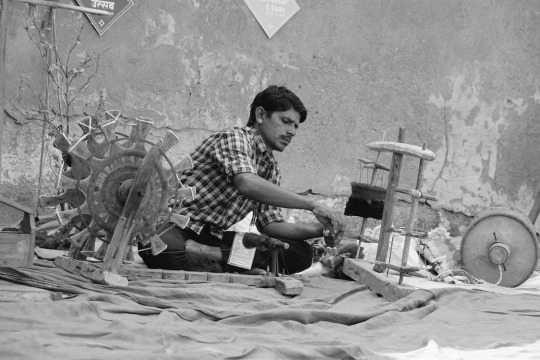
Discover the most sought-after Indian handicraft in the global market. From intricate textiles to ornate jewelry, explore the rich heritage and exquisite craftsmanship that make this particular Indian handicraft a highly coveted choice worldwide.
#global handicrafts market#global markets#handicraft business in india#handicraft exporter#Handicraft industry#handicraft product#Handicrafts#handicrafts market#handicrafts of himachal pradesh#Handicrafts wholesale in USA#Handmade items#India handicraft market#indian handicraft industry#indian handicraft items#Indian Handicrafts#indian handicrafts manufacturers#indian handicrafts#handicraft indian#handicrafts from india#Indian Handicrafts in USA#handicrafts wholesaler
0 notes
Text
Inheritagex- Premier destination for exploring and celebrating the rich heritage and culture
Inheritagex is your go-to destination for delving into and celebrating the rich tapestry of global heritage and culture. We are committed to preserving and elevating the timeless traditions, artisanal crafts, and stories that weave together our shared human legacy. To know more:
Website: https://inheritagex.com
Email: [email protected]
Contact Number: +91-9871905644
#Pashmina Shawls Export#Indian Handicrafts Online#Traditional Indian Crafts#Indian Silk Sarees Online#Yoga Decor from India#World Heritage Crafts#Global Ethnic Jewelry#Fair Trade Global Products
1 note
·
View note
Text
https://www.seair.co.in/blog/finding-genuine-buyers-for-indian-handicrafts-in-the-global-market.aspx

Explore the lucrative opportunities in the Indian handicrafts export market with Seair Exim Solutions. Access comprehensive Handicrafts export from India, find genuine buyers and navigate the competitive landscape effortlessly.
#Handicrafts export from India#Handicraft export data#handicrafts exporters in india#indian handicrafts exporters
0 notes
Text
Discover the vibrant world of handicrafts export from India and its impact on global markets. Uncover the rich cultural heritage, market trends, and opportunities with Seair Exim Solutions' insightful blog.
#Handicrafts export from India#Handicraft export data#handicrafts exporters in india#indian handicrafts exporters#handicraft export from india#top handicraft exporters in india
0 notes
Text
Marble Inlay Coasters Set of 6 | Ancient Crafting
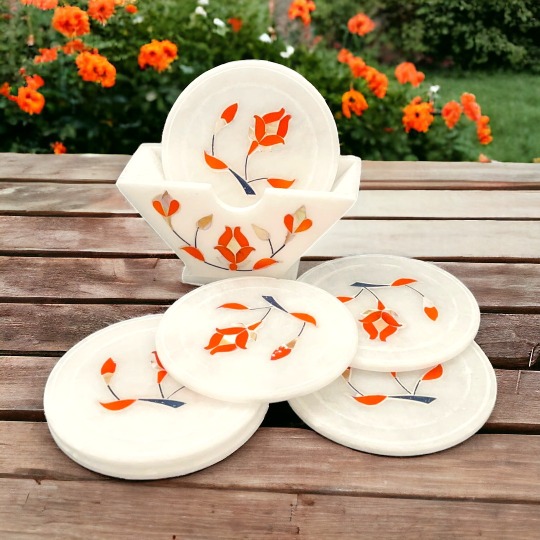
Marble Inlay Coasters Set
6 handcrafted coasters made of white marble, beautifully inlaid with semi-precious stones such as jasper, carnelian, and malachite. Because each coaster has a different appearance, this is a unique piece of decor. Any home is enhanced with a touch of timeless elegance by the natural stones.
Materials :
Lapis lazuli - Blue Stone Malachite - Green Stone. Carnelian - Orange Red Stone. Turquoise - Sky Blue Stone. size : 4 Inch wide
Ancient Crafting
antique handicraft items
antique stone handicrafts
buy online marble handicraft products
buy online stone handicraft
best stone handicrafts items from india
handmade stone items from india
marble and stone handicraft home decor items
indian stone handicrafts online
buy marble chess board online
handmade crafts online india
buy antique indian handicrafts online
#marble inlay coaster#handmade marble items#handmade crafts online india#handmade stone items from india#buy online marble handicraft products#antique stone handicrafts#buy antique indian handicrafts online#ancient crafting
0 notes
Text
Wooden Planters | Home Decor Items | Max Bee Global
Max Bee Global - Handicraft Products

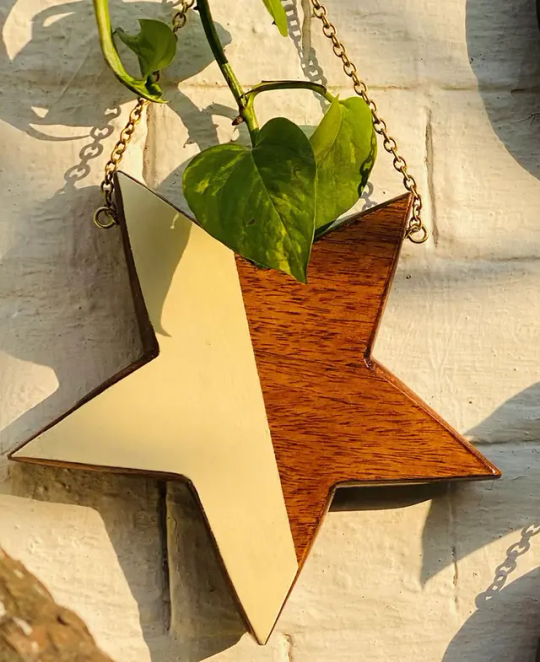
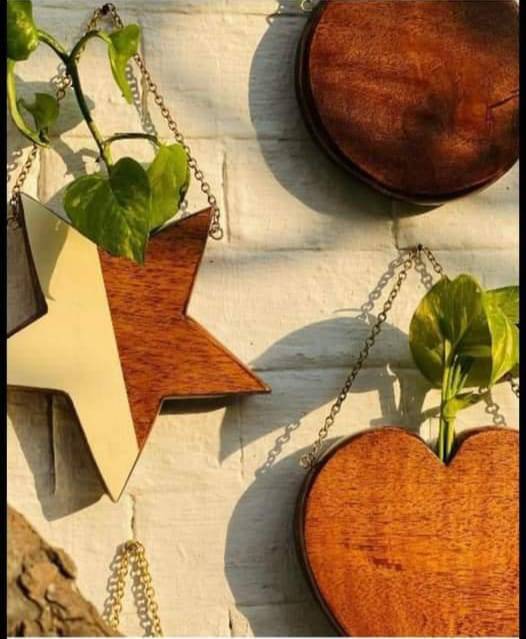
Add a touch of natural beauty to your home with the Max Bee Star Shape wooden planter. Handcrafted with durable wood and designed in a star shape, this planter is perfect for showcasing your favorite plants or succulents. Its unique design will surely make a statement in any room.
Size : 8.5 Inch
duel colour
Brass Chain
Order now : Max Bee wooden planter set of 3
Handcrafted inlay art
India Inlay Artwork
Famous handcraft in india
Handcrafted Wooden Planter set
online Handcrafted decorative bowls
online Handcrafted decorative plates
buy Energy stones in India
Handcrafted inlay art jewelry box
Handcrafted gift items online
Handicraft Indian Meenakari art
Jaali art work products from india
Best handcrafted products in India
Buy Handcrafted items online from india
Buy Luxury handmade products from india
#Buy Luxury handmade products from india#Buy Handcrafted items online from india#Best handcrafted products in India#Handicraft Indian Meenakari art#Handcrafted inlay art jewelry box#online Handcrafted decorative plates#Handcrafted inlay art
0 notes
Text
GSM Decor Export - Leading Handicraft Item Manufacturers and Exporters
Welcome to GSM Decor Export, your one-stop destination for high-quality handicraft items, exquisite imitation jewellery, and eco-friendly jute items. As a prominent manufacturer and exporter based in India, GSM Decor Export has been at the forefront of delivering exceptional craftsmanship and innovative designs to global markets. Here, we will delve into the diverse range of products offered by GSM Decor Export, highlighting their expertise as handicraft item manufacturers, their leadership in imitation jewellery export, and their commitment to promoting sustainable practices through jute items export.
We take pride in our rich heritage of crafting mesmerizing handicraft items that blend traditional artistry with contemporary designs. Our team of skilled artisans meticulously handcrafts each item, ensuring impeccable quality and attention to detail. From intricately carved wooden artifacts to beautifully embroidered textiles, our collection is a testament to the cultural diversity and artistic excellence of India. By preserving and promoting indigenous craft traditions, we strive to enrich homes and spaces worldwide with timeless beauty and cultural significance.
GSM Decor Export has emerged as a trusted name in the global market for imitation jewellery. Our extensive range of imitation jewellery export from India showcases the epitome of elegance and craftsmanship. We combine traditional techniques with modern aesthetics to create pieces that exude charm and sophistication. Our jewellery collection encompasses a wide variety of designs, including necklaces, earrings, bracelets, and rings, all crafted with precision and adorned with exquisite gemstones, pearls, and intricate metalwork. With our commitment to quality and customer satisfaction, we have become a preferred choice for retailers and distributors seeking top-notch imitation jewellery from India.

Eco-Friendly and Sustainable Jute & Copper Products from India
As the world embraces sustainable and eco-friendly alternatives, GSM Decor Export has taken a pioneering role in promoting jute items export from India. Jute, a versatile and renewable natural fiber, is the primary material used in our range of eco-friendly products. From sturdy jute bags and fashionable accessories to intricately woven home decor items, our jute collection reflects our dedication to environmental responsibility and ethical sourcing. By exporting jute items, we aim to contribute to a greener future while offering stylish and durable products to conscious consumers worldwide.Copper water bottles are also one of our specialties. Copper bottles have several health benefits such as improving digestion, regulating body temperature, and boosting your immune system. Our copper bottles are made from high-quality copper and designed with a unique and sleek finish. As a prominent copper bottle manufacturer in India, we offer a wide range of copper bottles in various sizes and designs that are easy to maintain and clean.
GSM Decor Export is a reliable and professional business that exports high-quality handicrafts, imitation jewellery, jute items, and copper bottles from India. Our products are designed with creativity, authenticity, and trendiness. We are committed to superior quality, eco-friendliness, and timely delivery. Feel free to contact us to get unique and beautiful products that add charm to your lifestyle.
#handicraft item manufacturers#imitation jewellery export from India#jute items export from India#copper bottle manufacturer in India
1 note
·
View note
Text
Unique Handcrafted Terracotta Showpieces for Home Decor : Sowpeace
Buy terracotta showpiece online and add handmade creativity and local crafts to your home to make it look more attractive. Read More >>

#what are terracotta items from India#what is terracotta made of#what is terracotta handicrafts#what is terracotta famous for
0 notes
Text
Pearl Handicrafts is a leading handicraft furniture, wooden furniture manufacturer & exporter in India. We offer a wide range of traditional furniture like dining tables, chairs, Handicraft Wooden Beds, Handicraft Teakwood Swings, Handicraft Dining Table, Handicraft Silver Furniture, sofas, and other home furnishing items at affordable prices. Our products are made from the finest quality of wood and are designed to suit Indian taste and lifestyle. We have a team of experienced craftsmen who create beautiful pieces of furniture that are both functional and stylish.
We export our products to various countries across the globe and have a strong clientele in USA, UK, Canada, and Australia. For us, service is always more important than the sale. We offer pre-sales and post-sales support to our clients so that they can make the most of our products.
#Wooden Furniture Manufacturer#Wooden Furniture Manufacturers in Rajasthan#Wooden Furniture Exporter in USA#Handicraft Furniture Manufacturer#Silver Furniture Manufacturer Jodhpur#Teakwood Swings Manufacturer Udaipur#Teakwood Swings Manufacturer Nathdwara#Dining Table Manufacturer Jaipur#Wooden Temple Manufacturer Udaipur#Wooden Beds Manufacturer Jaipur#Handicraft Furniture Manufacturer in Bikaner#Handicraft Furniture Kota#Handicraft Furniture Manufacturer in India#Handicraft Furniture Exporter in Australia#Handicraft Furniture Exporter in Canada#Handicraft Furniture Exporter in UK#Handicraft Furniture Exporter in USA#Top Furniture Manufacturer in USA#Wooden Furniture Suppliers#Wooden Furniture Exporters From India#Home Wooden Furniture Exporters in Australia#handicraft#furniture#vintage#decor#interiors
1 note
·
View note
Text
In Eastern Europe, for instance, the number of people living in cities declined by almost one-third during the seventeenth century, as the region became an agrarian serf-economy exporting cheap grain and timber to Western Europe. At the same time, Spanish and Portuguese colonizers were transforming the American continents into suppliers of precious metals and agricultural goods, with urban manufacturing suppressed by the state. When the capitalist world-system expanded into Africa in the eighteenth and nineteenth centuries, imports of British cloth and steel destroyed Indigenous textile production and iron smelting, while Africans were instead made to specialize in palm oil, peanuts, and other cheap cash crops produced with enslaved labor. India—once the great manufacturing hub of the world—suffered a similar fate after colonization by Britain in 1757. By 1840, British colonizers boasted that they had “succeeded in converting India from a manufacturing country into a country exporting raw produce.” Much the same story unfolded in China after it was forced to open its domestic economy to capitalist trade during the British invasion of 1839–42. According to historians, the influx of European textiles, soap, and other manufactured goods “destroyed rural handicraft industries in the villages, causing unemployment and hardship for the Chinese peasantry.”
Jason Hickel and Dylan Sullivan, Capitalism, Global Poverty, and the Case for Democratic Socialism
104 notes
·
View notes
Text
Future of Indian Handicraft Industry: Visionary Perspective
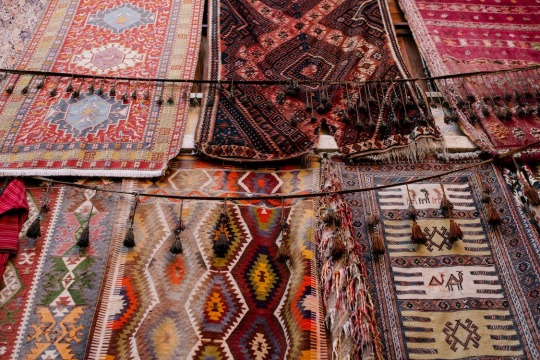
Gain insight into the future of the Indian handicraft industry from a visionary perspective. Explore the potential growth, innovation, and sustainability initiatives that can shape the industry's trajectory. Discover how traditional craftsmanship and modern influences can converge to create unique opportunities and propel the industry forward. Stay ahead of the curve and unlock the potential of the Indian handicraft sector with this visionary outlook.
#art and craft#art metal#craft skills#crocheted goods#exports from india#hand printed textiles#handicraft business in india#handicraft goods#Handicraft industry#handicraft industry in india#handicraft market in india#handicraft products#handicrafts business#handicrafts exports#handicrafts industry#handicrafts sector#handprinted textiles and scarves#human resources#india handicrafts#Indian artistry#indian craft#indian handicraft exporter#indian handicraft industry#Indian Handicrafts#indian handicrafts industry#international marketing#local artisans#national handicraft#raw material#textile industry in India
0 notes
Text
I wanna imagine the taskforce coming to India for like a short retreat.
Alejandro and Ruby immediately fit in because apart from the vegetarianism; Spanish and Indian have so many things in common.
They immediately gel well with the community and start exchanging recipes, delicacies and participating in events.
Gaz immediately jumps in in wedding celebrations where the band is playing while the audience walks around the road because celebration in India doesn’t care if you’re known and unknown. He ends up with fifty phone numbers at the end of the night, with five new families calling him “bhai” (brother).
But Soap and Ghost?
Soap takes very eagerly to everything it has to offer, from its rich history to the lost art styles and artisans and handicrafts made in India. It’s so gorgeous, the people are kinder than most and he enjoys himself. And that’s when he finds henna.
Henna, traditionally called mahendi, is a type of art form where they draw intricate patterns on your hands (you can have em done on your feet too if you want) and there’s a bright orange colour that blooms and stays for the next week or so.
Simon gets pulled into it, and blushes when they comment on how handsome he is. Soap wants to try and they teach him, but to practice he immediately takes to practising on himself.
He’s cursing, finding it difficult after a while when Ghost hesitantly holds his hand out and tells him to get it over with.
Soap draws along the scars, making them stand out but surrounding them with vines, flowers and just designs tracing them throughout, as if to show there is still beauty found in the shards.
The colour stays for a while, but Ghost feels amusement and fondness when he looks at his arms, seeing them as beauty for the first time in a long while.
#Simon riley#alejandro cod#rudolfo cod#alejandro mw2#rudy cod#Simon ghost riley#ghost#soap#Johnny mactavish#Johnny soap mactavish#ghostsoap#gaz garrick#Kyle gaz garrick#taskforce 141
254 notes
·
View notes
Text
https://www.seair.co.in/blog/finding-genuine-buyers-for-indian-handicrafts-in-the-global-market.aspx

Discover how Seair Exim Solutions helps Indian handicraft exporters find genuine buyers in the global market. Explore strategies, market insights, and trade data to expand your reach and boost exports. Unlock new opportunities for Indian handicrafts with Seair Exim Solutions.
#Handicrafts export from India#Handicraft export data#handicrafts exporters in india#indian handicrafts exporters#handicraft export from india#top handicraft exporters in india#indian handicrafts exporters list
0 notes
Text
Leather Duffel Bags | Leather Bags | Ancient Crafting
Ancient Crafting Handicraft Products
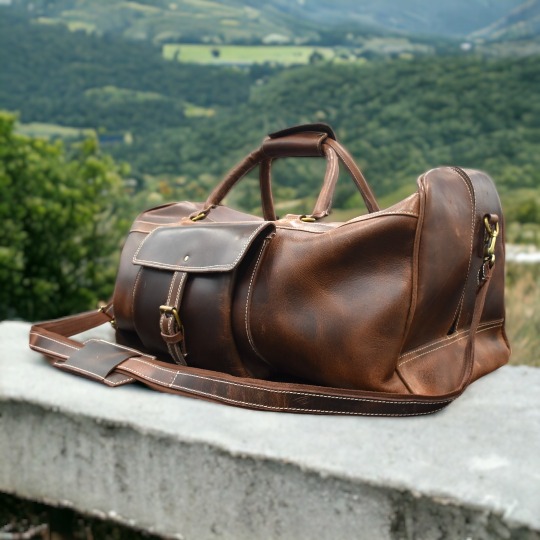

Meet your new travel buddy – the Leather Duffel Bag! 🌟 Stylish, roomy, and super durable- This bag is your perfect companion for any adventure. 💼
Pack with confidence and travel in style – because you deserve the best! 🌍✈️
Grab yours now and let your journeys be as amazing as your destination!
DM now to order or Visit : https://ancientcrafting.com/ . . #leatherduffelbag #leatherduffelbags #leatherbagshop #onlineleatherbags #duffelbags #duffelbagsonline #leatherduffelbagformen #leatherduffelbagforwomen #leatherduffelsonsale #leatherbags #UniqueLeatherBags #orderfromwebsite #leatherbagsuk #dmustoorder #ancientcrafting
antique handicraft items
antique stone handicrafts
buy online marble handicraft products
buy online stone handicraft
best stone handicrafts items from india
handmade stone items from india
marble and stone handicraft home decor items
indian stone handicrafts online
buy marble chess board online
leather duffel bags
#leather duffel bags#buy marble chess board online#marble and stone handicraft home decor items#indian stone handicrafts online#handmade stone items from india#best stone handicrafts items from india#buy online stone handicraft
0 notes
Text
Online Handcrafted Decorative Plates | Famous Handicraft in India | Max Bee Global
Max Bee Global
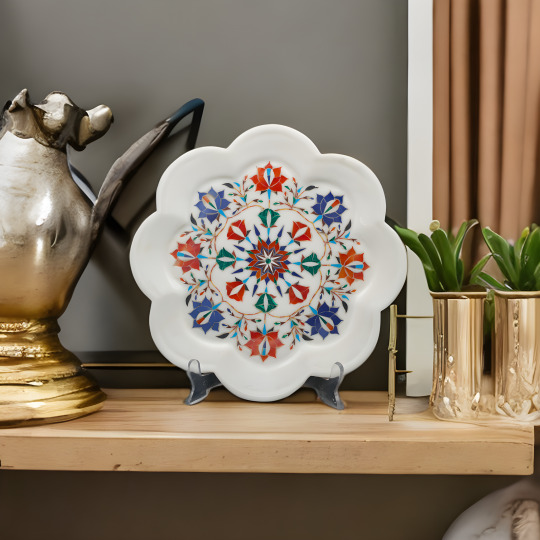
The Max Bee Handcrafted Marble Plate features intricate inlay artwork made with Carnelian semi-precious gemstone. Combining the rustic beauty of marble and the glimmer of Carnelian, this stunning plate is sure to be a conversation starter at any gathering.
Lapis lazuli - Blue Stone
Malachite - Green Stone.
Carnelian - Orange Red Stone.
Turquoise - Sky Blue Stone.
Paua Shell - Colorful Shiny.
Jasper - Brown Stone.
Mother of Pearl - White Shining Stone.
Order now : https://www.maxbeeglobal.com/products/copy-of-max-bee-handcrafted-marble-plate-with-intricate-inlay-artwork-made-with-carnelian-semi-precious-gemstone
Handcrafted inlay art
India Inlay Artwork
Famous handcraft in india
Handcrafted coasters
online Handcrafted decorative bowls
online Handcrafted decorative plates
Handcrafted inlay art jewelry box
Handicraft gift items online
Handicraft Indian Meenakari art
Jaali art work products from india
Best handcrafted products in India
Buy Handcrafted items online from india
Buy Luxury handmade products from india
#Buy Luxury handmade products from india#Buy Handcrafted items online from india#Best handcrafted products in India#Jaali art work products from india#Handicraft Indian Meenakari art#online Handcrafted decorative bowls#online Handcrafted decorative plates
0 notes